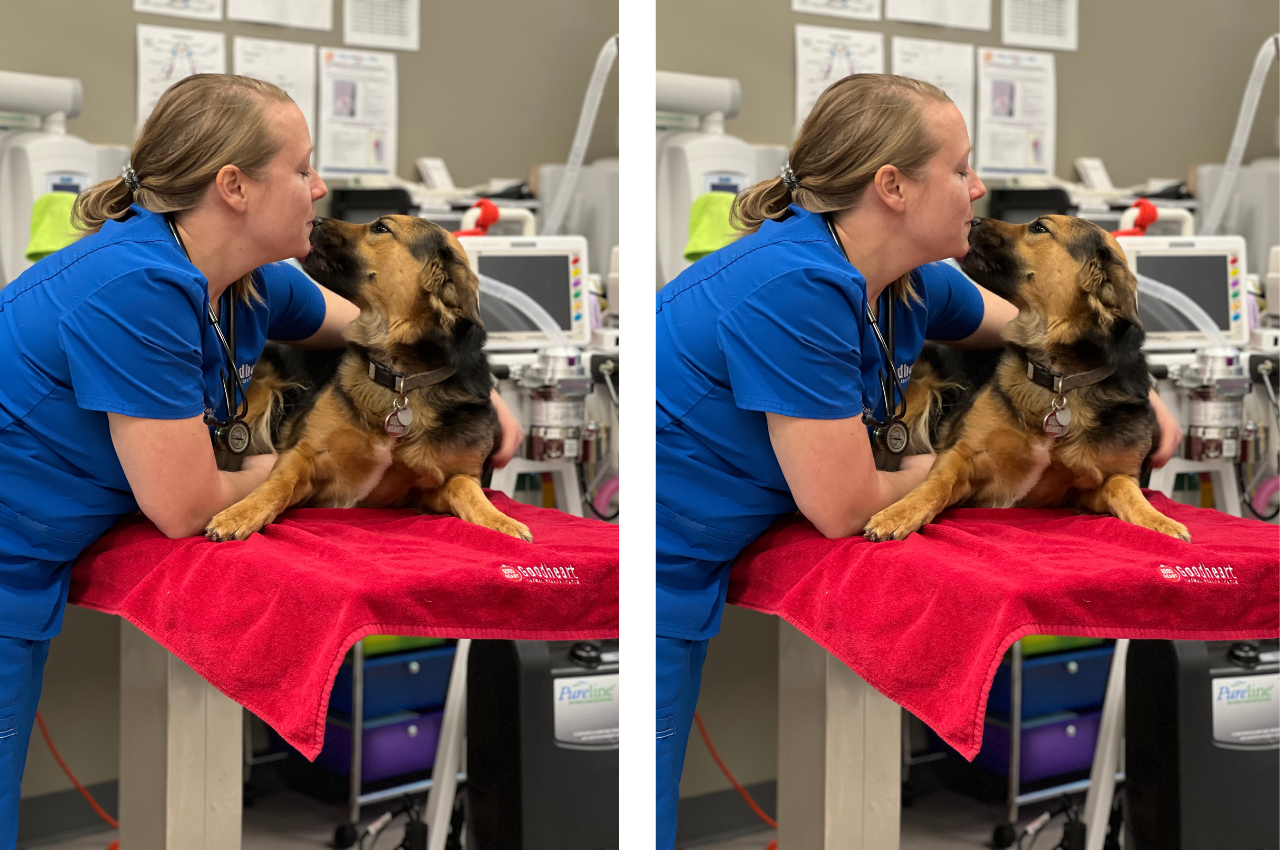2.5 minute read

Dr Christina Suhr with her dog, Stevie.
Check out the Audio Version of this Post!
Dental X-Rays And Their Benefits To Your Pet's Health
“We recently did a dental cleaning on my dog, Stevie,” says Dr Christina Suhr. “I was shocked by her terrible x-rays! We learned that most of her roots are non-existent and that she has many enamel defects, likely due to an infection when she was very young.
The x-rays also showed disease was likely causing her pain. I now know she is at high risk for infection and breaking teeth. We’ll do dental cleanings every 6-12 months to keep her mouth as healthy as possible!”
What do pet x-rays show?
When it comes to your dog or cat’s oral health, Goodheart wants the full picture that x-rays provide. Often, we see that everything looks normal. Sometimes, we find abnormalities or catch disease.
We do x-rays for all our patients each year because we believe in preventive medicine. By age 3, almost all pets have some form of dental disease. Getting ahead of this (and the resulting bacteria that harms your pet’s organs) can save your pet’s life!
Yet, please know that this blog isn’t intended to scare you away from dental exams or cleanings. It’s meant to help you understand our practices at Goodheart. Not all dental cleanings result in pulled teeth! We often see a normal and healthy mouth. Please know that we’re thoughtful in our approach to tooth extractions. We always involve you in the decision and weigh the pros and cons.
3 reasons x-rays are important for cats and dogs:
1. They help us see what the eye cannot.
More than 60% of the tooth lies below the gums. That means toothbrushes only reach a fraction of the complete tooth. X-rays are essential for finding dental problems that lie below the gums.
A quick PSA about brushing pet’s teeth: It’s a great habit if your pet will let you get into their mouths. Yet, regular brushing is only a small way to combat tartar. Professional dental cleanings under anesthesia are the only real way to clean a pet’s whole tooth.
2. Painful dental problems may only be discovered on x-rays.
Pets are great at hiding pain. X-rays can help us find:
-Infection under the gums
-Broken teeth
-Pieces of teeth that lie below the gums
-Jawbone loss
X-rays ensure we notice and solve these painful problems.
3. Dental X-rays help gauge the severity of your pet’s dental disease (if there is any at all).
They provide more information than a visual exam. Dental diseases can be a precursor to heart disease, kidney disease, and jawbone loss.
Do dogs really need dental X-rays? Do cats?
Yes. We don’t want to take a chance with your pet’s health. We know this relationship brings you great joy. Our goal is to keep your pet by your side for a long time. While annual dental care might seem expensive (or excessive), a healthy mouth results in a healthy body.
Do you need to put my dog under anesthesia to do an x-ray?
Yes. Dogs and cats won’t sit still for an x-ray. So we take x-rays during the dental cleaning to see where we need to focus our attention.
Are dental x-rays expensive?
We wrap the x-rays into the cost of a dental cleaning. Please call us and one of our client service coordinators can walk you through our pricing.
At Goodheart, we believe in preventive health care. That means catching disease before it’s an issue. We care for your pets as if they were our own.
